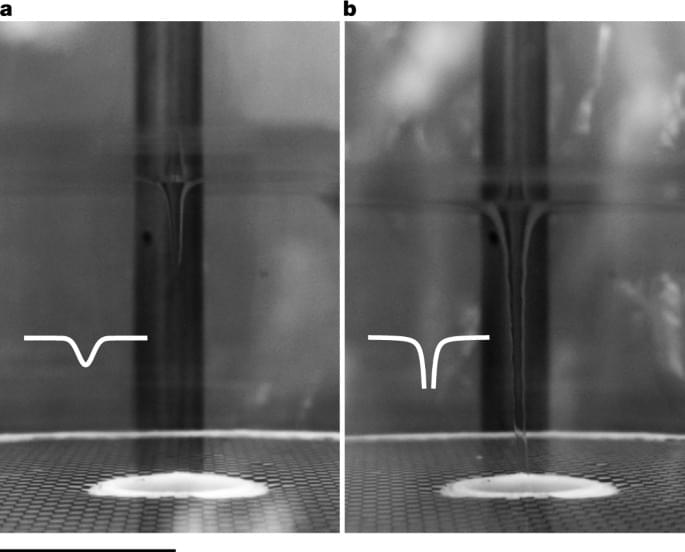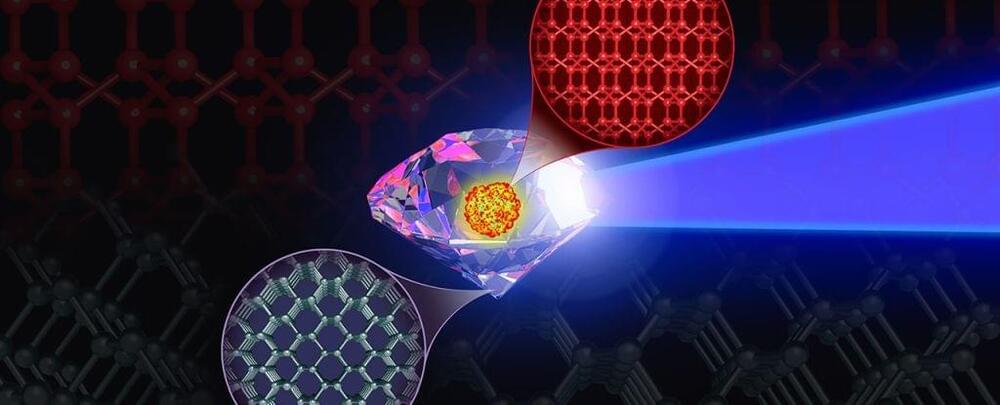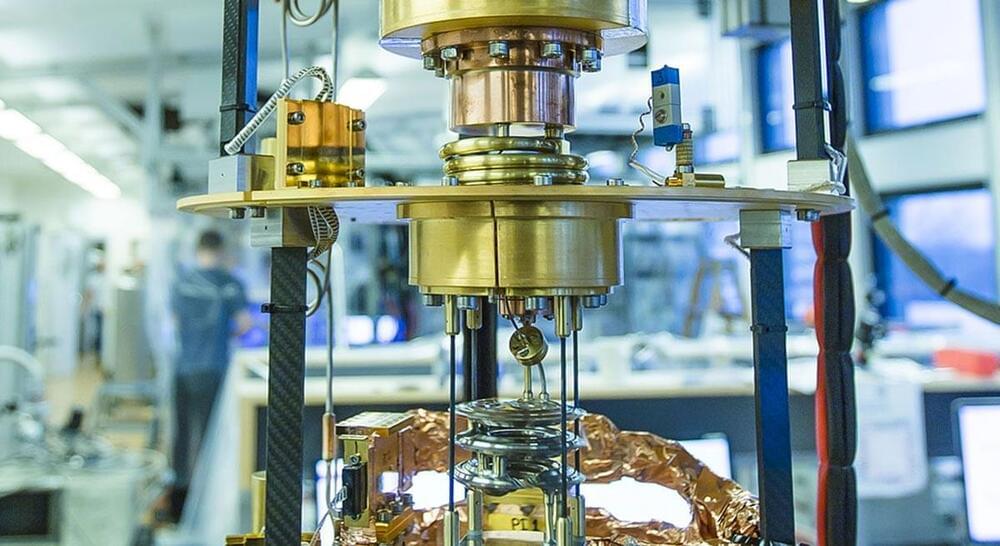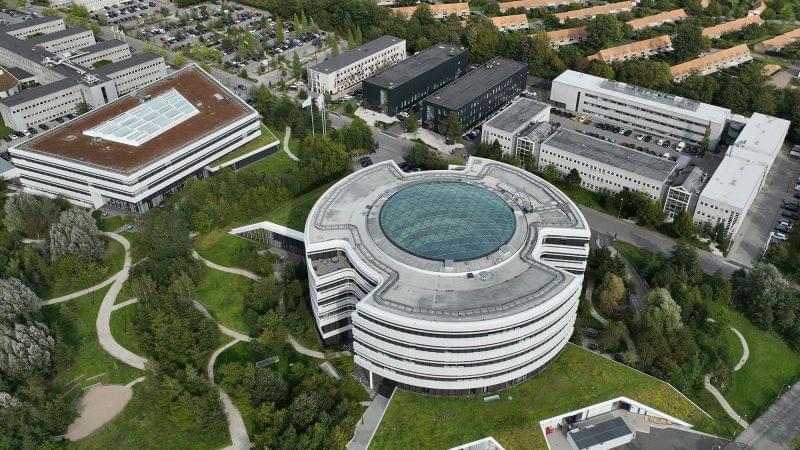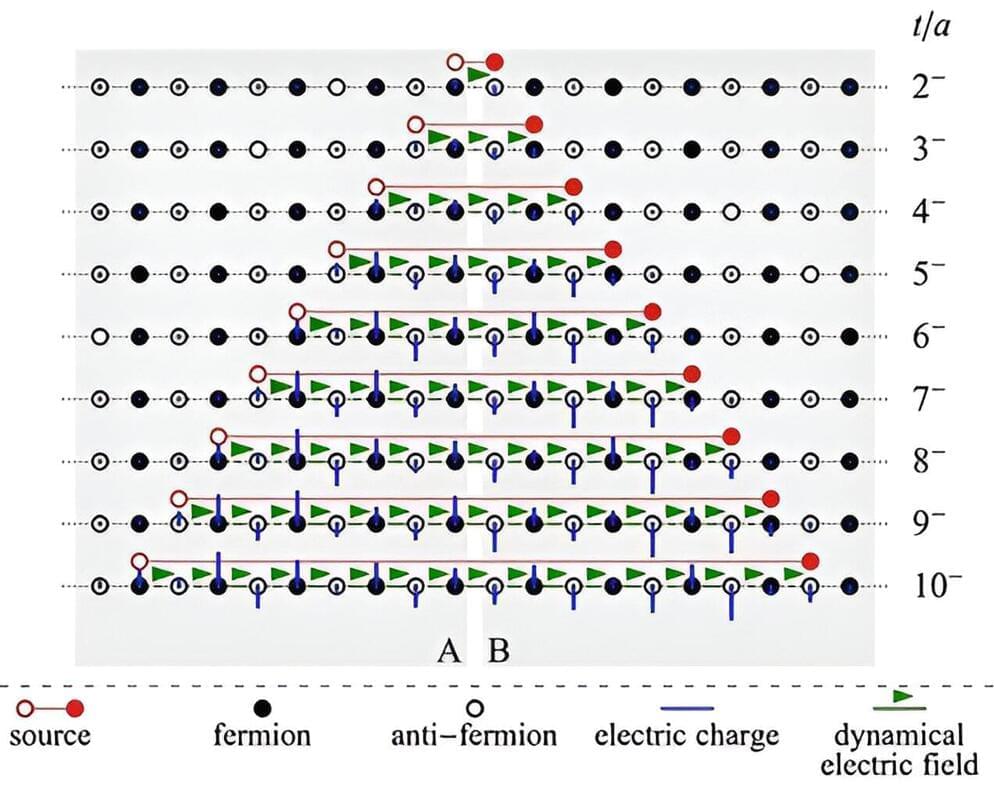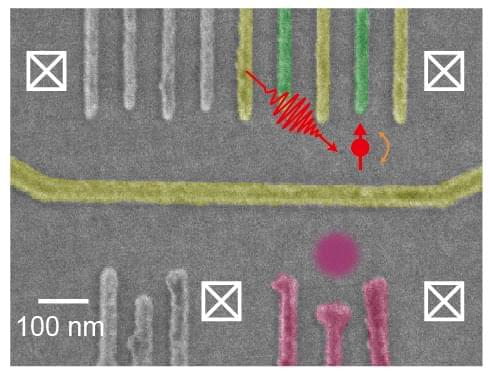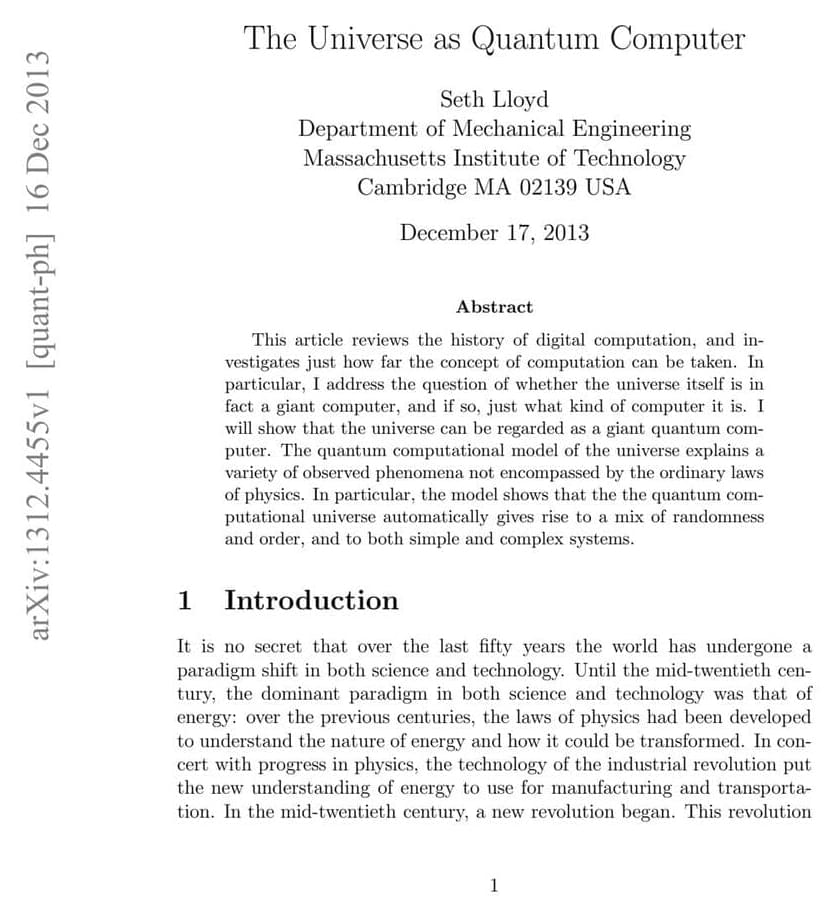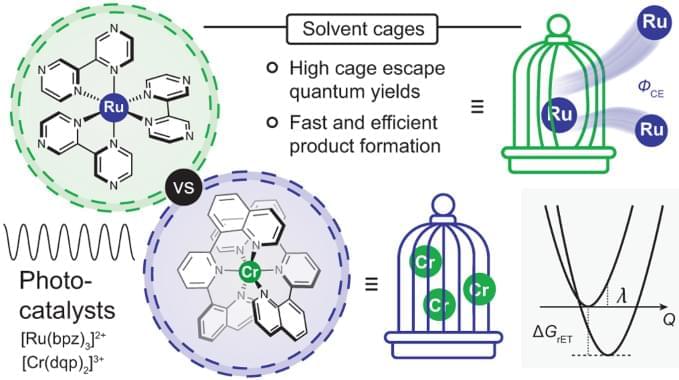By stabilizing a stationary giant quantum vortex in superfluid 4He and introducing a minimally invasive way to characterize the vortex flow, intricate wave–vortex interactions are shown to simulate black hole ringdown physics.
Category: quantum physics – Page 240
Simulations of an elusive carbon molecule that leaves diamonds in the dust for hardness may pave the way to creating it in a lab.
Known as the eight-atom body-centered cubic (BC8) phase, the configuration is expected to be up to 30 percent more resistant to compression than diamond – the hardest known stable material on Earth.
Physicists from the US and Sweden ran quantum-accurate molecular-dynamics simulations on a supercomputer to see how diamond behaved under high pressure when temperatures rose to levels that ought to make it unstable, revealing new clues on the conditions that could push the carbon atoms in diamond into the unusual structure.
Scientists around the world work hard to rinse quantum systems for noise, which may disturb the function of tomorrow’s powerful quantum computers. Researchers from the Niels Bohr Institute (NBI) have found a way to use noise to process quantum information. This raises the performance of the quantum computing unit, the qubit.
An international collaboration led by scientists at the Niels Bohr Institute (NBI), University of Copenhagen, has demonstrated an alternative approach. Their method allows to use noise to process quantum information. As a result, the performance of the fundamental quantum computing unit of information, the qubit, is increased by 700 percent.
The results were published recently in the journal Nature Communications.
The owner of Novo Nordisk, the drugmaker that gave the world Ozempic and Wegovy, is funding a new supercomputer powered by Nvidia’s artificial intelligence technology with a key aim of discovering new medicines and treatments.
The Novo Nordisk Foundation has awarded France’s Eviden a contract to build what the computing company says will be one of the world’s most powerful supercomputers, able to process vast amounts of data using AI.
It should provide “unprecedented potential to accelerate groundbreaking scientific discoveries in areas such as drug discovery, disease diagnosis and treatment,” Cédric Bourrasset, Eviden’s head of quantum computing, said in a statement.
Today, the word “quantum” is everywhere—in company names, movie titles, even theaters. But at its core, the concept of a quantum—the tiniest, discrete amount of something—was first developed to explain the behavior of the smallest bits of matter and energy.
Researchers at Osaka University’s Institute of Scientific and Industrial Research (SANKEN) used the shortcuts to the adiabaticity (STA) method to greatly speed-up the adiabatic evolution of spin qubits. The spin flip fidelity after pulse optimization can be as high as 97.8% in GaAs quantum dots. This work may be applicable to other adiabatic passage and will be useful for fast and high-fidelity quantum control.
A quantum computer uses the superposition of “0” and “1” states to perform information processing, which is completely different from classical computing, thus allowing for the solution of certain problems at a much faster rate.
High-fidelity quantum state operation in large enough programmable qubit spaces is required to achieve the “quantum advantage.” The conventional method for changing quantum states uses pulse control, which is sensitive to noises and control errors.
1312.4455–2.pdf
Posted in computing, quantum physics
The 3 MLCT-excited [Ru(bpz)3]2+ and the spin-flip excited states of [Cr(dqp)2]3+ underwent photoinduced electron-transfer reactions with 12 amine-based electron donors similarly well, but provided cage escape quantum yields differing by up to an order of magnitude. In three exemplary benchmark photoredox reactions performed with different electron donors, the differences in the reaction rates observed when using either [Ru(bpz)3]2+ or [Cr(dqp)2]3+ as photocatalyst correlated with the magnitude of the cage escape quantum yields. These correlations indicate that the cage escape quantum yields play a decisive role in the reaction rates and quantum efficiencies of the photoredox reactions, and also illustrate that luminescence quenching experiments are insufficient for obtaining quantitative insights into photoredox reactivity.
From a purely physical chemistry perspective, these findings are not a priori surprising as the rate of photoproduct formation in an overall reaction comprising several consecutive elementary steps can be expressed as the product of the quantum yields of the individual elementary steps45,46. A recent report on solvent-dependent cage escape and photoredox studies suggested that the correlations between photoredox product formation rates and cage escape quantum yields might be observable11, but we are unaware of previous reports that have been able to demonstrate that the rate of product formation in several batch-type photoreactions correlates with the cage escape quantum yields determined from laser experiments. Synthetic photochemistry and mechanistic investigations are often conducted under substantially different conditions, which can lead to controversial discrepancies47,48,49, whereas here their mutual agreement seems remarkable, particularly given the complexity of the overall reactions.
The available data and the presented analysis suggest that the different cage escape behaviours of [Ru(bpz)3]2+ and [Cr(dqp)2]3+ originate in the fact that for any given electron donor, in-cage reverse electron transfer is ~0.3 eV more exergonic for the RuII complex than for the CrIII complex. Thermal reverse electron transfer between caged radical pairs therefore occurs more deeply in the Marcus inverted region with [Ru(bpz)3]2+ than with [Cr(dqp)2]3+, decelerating in-cage charge recombination in the RuII complex and increasing the cage escape quantum yields compared with the CrIII complex (Fig. 3D).
💰Special Offer!💰 Use our link https://joinnautilus.com/SABINE to get 15% off your membership!For the first time in 4 decades, physicists have found a new a…
Quantum physics starts with the 20th century as scientists try to understand light bulbs. This simple quest led scientists on a deep journey.
Professor Jim Al-Khalili reveals how Einstein thought he’d found a fatal flaw in quantum physics that implies that subatomic particles can communicate faster than light. The host of \.
